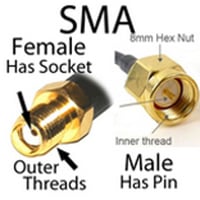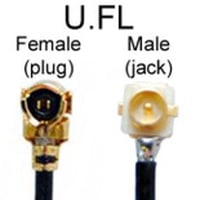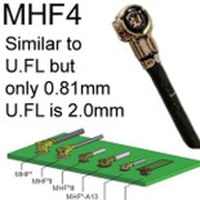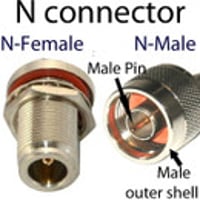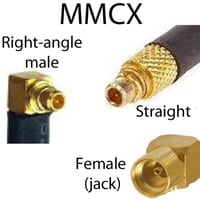RP-SMA Extension Cable: 4FT, 5FT Male to Female Extender Outdoor Indoor
- SKU:
- RSm4ftRSf100
- Availability:
- In stock
- Weight:
- 0.09 LBS
Data Alliance
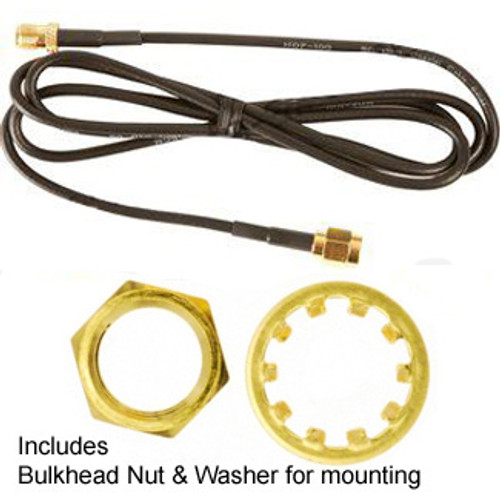
Data Alliance
RP-SMA Extension Cable: 4FT, 5FT Male to Female Extender Outdoor Indoor
1 Review
-
sturdy wire
Impressed with quality of food his wire. Ends are good quality and cable seems sturdy while being flexible
RP-SMA Extension Cable
RP-SMA female to male Antenna Cable Extender:
- Our RP-SMA Extension Cable is unique. It has an RP-SMA female right-angle connector on one end and an RP-SMA male right-angle connector with a bulkhead nut and washer for mounting and weatherproofing on the other. This design ensures easy installation and protection against weather conditions.
- The cable length stated in the length options is between the connectors.
- The connectors are straight RP-SMA-male and straight RP-SMA female connectors with bulkheads.
- Data Alliance's high-quality soldered terminations of RP-SMA connectors with soldering provide a low-loss connection with discontinuities kept to a minimum.
Our RP-SMA Extension Cable is flexible and easily bendable, and it's also double-shielded with a black jacket. This high-quality construction, including the double-shielding, ensures its durability and superior performance.
We offer two options for the thickness of the cable (both are double-shielded):
- The LMR-100 equivalent cable-type is equivalent or better than LMR100: Has the same or better signal-loss-per-meter and flexibility as LMR100, and less attenuation (signal loss) than RG174 and RG178. The LMR-100 equivalent cable type is equivalent or better than LMR100: It has the same or better signal loss per meter and flexibility as LMR100 and less attenuation (signal loss) than RG174 and RG178. This antenna's higher quality cable translates into lower loss/better performance. The cable is equivalent to LMR-100 in thickness. The recommended maximum bend radius is 1.1 inches (28mm).
- The LMR-200-equivalent cable-type is equivalent or better than LMR200: Has the same or better signal-loss-per-meter and flexibility as LMR200, and less attenuation (signal loss) than RG58.
- See comparison of LMR-100 and LMR-200 attenuation (signal loss).
The temperature range for the operational use of these cable assemblies is as follows:
- Cables with 100-series coax: -22 F ~ +185 F (-30 C ~ +85 C)
- Cables with 200-series coax: -31 F ~ +203 F (-35 C ~ +95 C)
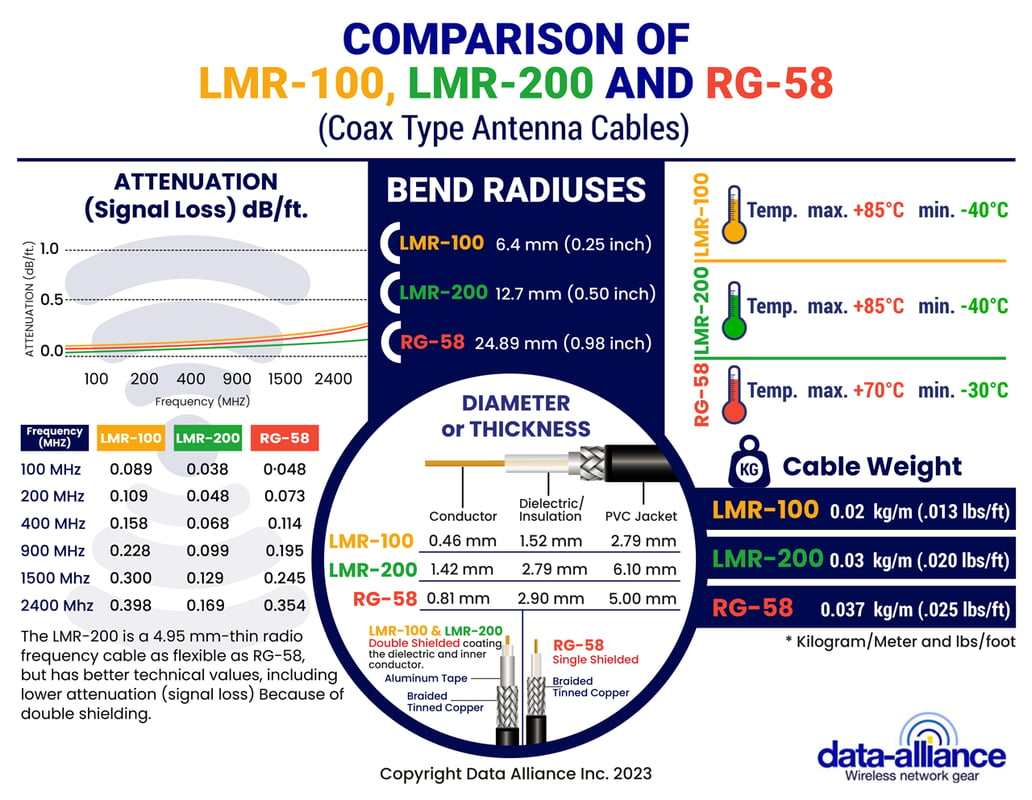
RP-SMA female connector includes a bulkhead nut and washer for mounting & waterproofing:
- This can be used to mount the connector (and thus the cable) on the wall of a network enclosure (to weatherproof the cable connection) or on a case, panel, or Printed Circuit Board (PCB).
- Weatherproofing: Seal the hole where the female connector is mounted by placing an O-ring between the enclosure wall and the bulkhead nut & washer on the female connector.
- The length of our standard RP-SMA-female connector (threaded part) is 3/8 inches. We have a longer option, 14.5mm, which is available. The longer 14.5mm option has an O-ring embedded in the flange to waterproof the port where the cable enters a network enclosure.
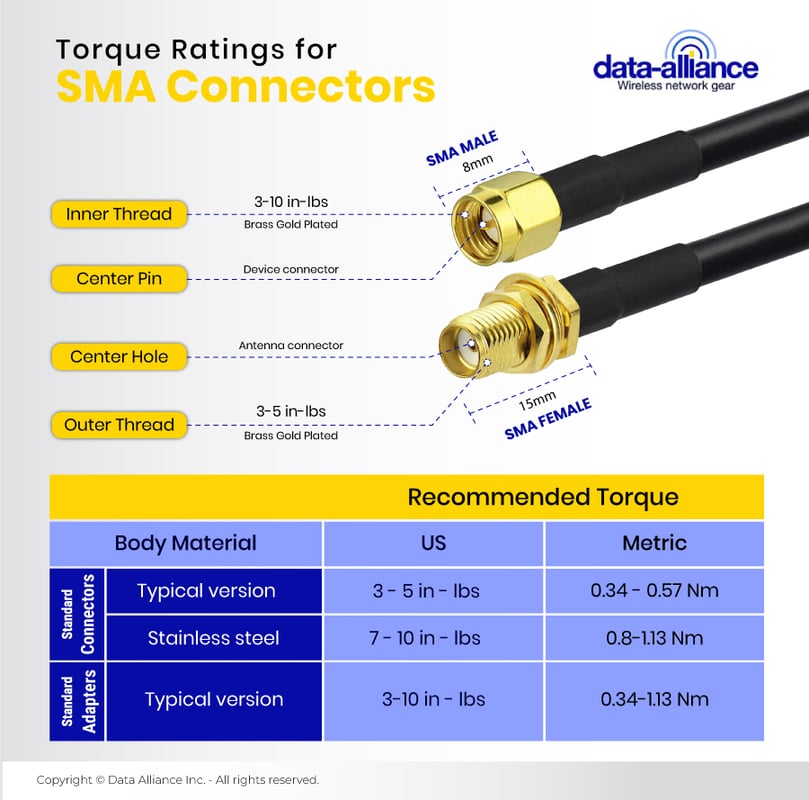
Compatibility with wireless standards & applications:
- All WiFi standards: 2.4GHz and 5GHz applications: Wi-Fi 6, WiFi 6E, 802.11AX, 802.11AC, 802.11N, 802.11G, 802.11B, 802.11A
- Cellular Wireless LTE / 4G, GSM / 3G WiMax, 5G: Data and voice applications
- IoT wireless, automation & Machine to Machine (M2M): Bluetooth, ZigBee, RFID, LoRa, LTE-m, NB-IoT.
- Compatible with all Helium miners used in North America, including Bobcat miners, Sensecap miners, and all other Helium LongFi miners, as are all of our antenna cables and adapters with RP-SMA-male connectors
Our RP-SMA extension cables' range of frequency band compatibility (from 0 to 18GHz), consistently low broadband VSWR, and impedance matching to 50 Ohm antennas and cables make them suitable and compliant for all the above applications.
ROHS 3 and REACH: Our antenna cables comply with ROHS 3 and REACH restrictions on lead content, other heavy metals, and toxic materials.
RP-SMA male-to-female extension cable is easy and quick to install: The RP-SMA male connector fits the jack on most WiFi routers, and the RP-SMA female connector fits the male connector on antennas with an RP-SMA male connector: Most WiFi antennas with an RP-SMA connector have a male connector. The extension cable enables the antenna to be placed further from the router in the most suitable place for line of sight.
Related components:
Frequently Asked Questions
What is the velocity factor of the cable used in the RP-SMA extension?
The velocity factor of the cable is 0.66, which is typical for polyethylene dielectric cables, indicating the speed at which signals travel through the cable compared to the speed of light in a vacuum.
How does the cable's attenuation change with frequency?
The cable's attenuation increases with frequency. For instance, at 1 GHz, the attenuation is approximately 0.15 dB/m, while at 6 GHz, it rises to around 0.5 dB/m.
What is the maximum tensile strength of the cable?
The maximum tensile strength of the cable is 150 Newtons, ensuring durability during installation and use.
How does the cable perform in terms of return loss across its frequency range?
The return loss for the cable is better than 20 dB up to 6 GHz, which indicates a high level of signal integrity and minimal reflections.
What are the specific materials used in the outer jacket of the cable for environmental resistance?
The outer jacket is made of UV-resistant polyethylene (PE), which provides protection against sunlight, moisture, and other environmental factors.
How does the cable handle power dissipation over long-term use?
The cable can handle power dissipation efficiently due to its low-loss design and high thermal stability of the dielectric material, preventing significant heat buildup.
What is the characteristic capacitance per meter of the RP-SMA extension cable?
The characteristic capacitance is approximately 100 pF/m, which is essential for maintaining signal quality over the cable's length.
Are the connectors soldered or crimped, and what are the implications for performance?
The connectors are crimped, which provides a reliable and consistent connection with minimal impedance variation, ensuring stable performance.
How does the RP-SMA extension cable handle phase stability across temperature variations?
The phase stability is within ±2° per meter over the operating temperature range, ensuring consistent signal timing even in fluctuating temperatures.
What are the specific shielding properties (e.g., shielding effectiveness in dB) of the cable?
The shielding effectiveness is greater than 90 dB, providing excellent protection against external interference and maintaining signal integrity.


